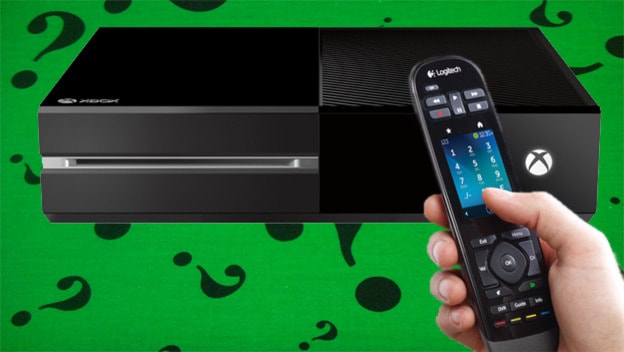The Xbox One is more than just a gaming system. Microsoft markets the console as the center of the entertainment center that delivers media from the internet and your cable/satellite television provider. In my experience, navigating through the various Xbox One menus with the provided controller can be convoluted. Kinect helps to alleviate this to an extent, but you may not want to constantly talk to your console every time you want to do something. Fortunately, owners of the Logitech Harmony remotes don’t have to deal with any of that. Not too long ago, Logitech updated the controller’s software to support the Xbox One. In the case of the Logitech Harmony Touch, there’s a special Xbox One option on the remote’s touchscreen that accesses common functions for returning to the dashboard, fast forwarding, rewinding and ejecting a disc. There are also touch-sensitive commands for the Xbox One controller’s face buttons. This, along with the remote’s physical buttons, effectively takes the place of the Xbox One controller for all non-gaming applications. How well does it work? I’ve been using this setup for over a week to find out for myself.
Let’s go over the Logitech Harmony Touch remote in general for a moment. This isn’t a remote for everyone mainly because of its price. Amazon is currently selling this remote for around $177. Its potential is not realized if you only have a couple of devices to control. It’s really meant for people who have a LOT of electronics with multiple functions. The Harmony Touch can be programmed to control one device at a time or follow a customized sequence. In my case, I set up the remote to interact with the Xbox One, the TV and an Xfinity cable box/DVR. Pressing the Xbox One button on the touchscreen causes the console, TV and cable box to turn on at the same time. While on the dashboard, I move between the various apps using the remote’s directional pad. There’s also an “OK” button in the center of the remote that doubles as the “A” button on the Xbox One controller. In my experience, the remote behaved as it should with minor quirks. For example, there is a very slight delay between pushing a button and seeing the result on screen. There are options on the My Harmony website to change input lag/responsiveness of the controller, but I couldn’t get it to mimic the Xbox One controller perfectly.

I got the most use out of this controller while watching video content. Just like any other remote, I can pause, play, rewind and fast forward at will. I do think the buttons for these actions are awkwardly placed at the top of the remote. I have to slide the remote down in my hand to access them. If you use the remote with two hands, this won’t be a problem.
I watched a lot of television with this remote as my only input device. The experience was acceptable, but it was ultimately held back by the input lag that I couldn’t get quite right. There also aren’t any physical numbers on the remote, so I had to rely on the touchscreen for that. Because of this, entering specific channels takes a little bit longer. Another alternative would be to favorite certain channels and access them from the Xbox OneGuide.
Due to the expense of this remote, I wouldn’t recommend anyone buy it solely as an Xbox One remote. You need to have multiple devices to get the most value out of the Logitech Harmony Touch. To its credit, there are plenty of customizable options available from the My Harmony website. You can even upload your own JPEGS for icons. In the end, the Logitech Harmony Touch and Xbox One share a very similar philosophy: they both want to be the only device in their class that you use every day.
